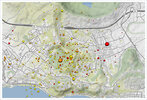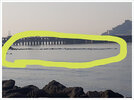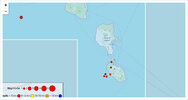Azores, Portugal
29 March 2022
In this article by german Vulkane.net, you can read more information about the situation on the Azores, the island of São Jorge, translated into DeepL English below.
Volume of intrusion calculated
29 March 2022 by Marc Szeglat
• Magma intrusion has increased
• Volume is said to be 20 million cubic metres
• Nature of earthquakes is controversial
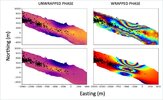 The Azores island of São Jorge does not come to rest
The Azores island of São Jorge does not come to rest
Although seismicity continues to decline, new data are available that do not bode well. Inflation has increased further and is now almost 10 cm. The Spanish institute INVOLCAN, which many people will remember from the reports on La Palma, has calculated the volume of the magma intrusion that is supposedly responsible for the ground uplift. It amounts to a good 20 million cubic metres. The value is comparable to that of the initial intrusion on La Palma.
The INVOLCAN researchers write that at the beginning of the seismic crisis on São Jorge, there were doubts as to whether the earthquakes were tectonic or volcanotectonic in origin. The doubt seems to have been dispelled with the calculation of the intruded magma volume, at least that is true for the INVOLCAN researchers. They report more than 400 earthquakes with magnitudes up to 3.3. Most likely, this refers to earthquakes with magnitudes greater than 1.5.
Earthquakes that are weaker fall in the range of microseismicity, whereby the various institutes flexibly handle the threshold magnitude below which quakes are considered microquakes. I have come across values between 1.3 and 1.7.
If microquakes are taken into account, there have probably been more than 14,000 tremors. This probably also takes into account extremely weak ground vibrations, which can even assume negative magnitudes and which have only been detectable with the most modern technology for a few years.
Earthquakes on São Jorge are possibly tectonic in nature
Speaking of technology: quite a bit of it is being installed on the island in the last few days. But not only geotechnical engineers are on São Jorge, but also many researchers from different disciplines. If you read through the interviews published in the various media, the picture is not as clear as one might think from the INVOLCAN report mentioned above. Professor Rui Fernandes explained in an interview with the newspaper Expresso: "At first we thought that these earthquakes were caused by an igneous intrusion, but that may not be the case. All the earthquakes that have occurred so far are tectonic in nature. That is, they are not caused by volcanic activity, but because the tectonic fault has been activated ". We see that there is still controversy about what is happening and it is not certain that there will be a volcanic eruption
________________________________________________
Azores, Portugal
27 March 2022
2 days earlier compared to above: Marc Szeglat at
Vulkane.net wrote about the situation on the Azores:
São Jorge with inflation increase and earthquake
Date: 27.03.22 | Time: 11:34:36 UTC | Location: 38.68 N ; 28.18 W | Depth: 11 km | Ml 2.9
• On São Jorge it continues to shake
• Ground uplift is more than 8 cm
• Rockfalls and landslides have occurred
• Evacuations are being prepared

On the Azores island of São Jorge, not only do the earthquakes continue, but an increase in ground uplift has been detected. Between 15 and 27 March, the ground rose by more than 8 cm, which is already a significant value. If the ground uplift is caused by magma inflation - which is not scientifically proven, but which I now assume - then there should be enough melt in the subsurface to cause a small effusive eruption. On La Palma, the ground uplift was a good 20 cm before the lava erupted.
As mentioned, the earthquakes continue. The EMSC recorded 5 earthquakes with magnitudes greater than 2 until this evening. The strongest quake brought it to Ml 2.9. The hypocentre was located at a depth of 11 km. There were numerous microearthquakes that were not recorded by the EMSC. However, the earthquake frequency is decreasing. Media agencies report that there have already been over 13,000 tremors since the seismic crisis began.
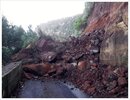
Today there were also 2 landslides on São Jorge. A road was buried and some households were cut off from the outside world. It was raining heavily and landslides are not uncommon in such weather conditions. But it could also be that earthquakes and inflation had a hand in triggering the landslides.
Evacuations are being prepared on São Jorge
The local civil protection is preparing the evacuation of about 5000 inhabitants of the danger zone. Many families have already left their homes. Some have fled the island altogether, but most people are staying with relatives in the east of São Jorge.
So far, it is uncertain how the situation will develop. The whole thing may blow over without a major earthquake or volcanic eruption. One scenario is that the earth first calms down, only to become restless again months to years later. There could also be a volcanic eruption within days/weeks. It remains exciting on São Jorge. Stay tuned!



